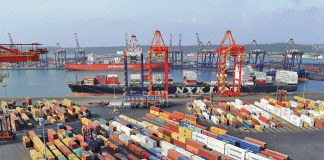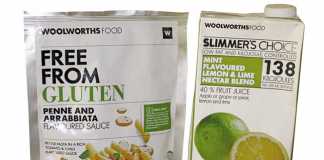Some role-players in the red meat industry are concerned that it has been in limbo for too long. There are also fears that the implementation delays of the Meat Safety Act (40 of 2000) will damage the industry’s credibility, affect consumer confidence in red meat products, and reduce the possibility of gaining access to international markets.
The act should promote the safety of meat and animal products, and establish and maintain essential national standards in abattoirs. Dr Gerhard Neethling, general manager of the Red Meat Abattoir Association, says legislation governing meat safety is excellent and makes provision for good systems on paper, but in practice it is not managed well enough to ensure a good standard of meat inspection. National standards are not in place to ensure appropriate standards for authorised inspectors to perform this function.
The compliance of abattoirs to regulatory requirements is not evaluated or enforced equally on a national basis. “More is needed to assure hygiene of environment in which food production takes place,” Neethling says. He says the dilemma is that the Department of Agriculture still has to appoint authorised inspectors, also known as independent meat inspectors, to conduct uniform meat inspection in all provinces. absence of a national standard means the act can be widely interpreted and makes it difficult for assignees to ensure it is enforced in all abattoir facilities.
Neethling is concerned that the role of vets and meat inspectors in hygiene management is optional at the discretion of the provincial executive officer. “You cannot separate verification of hygiene management from meat inspection but this is not the case,” Neethling says. “Ultimately, the responsibility of an inspector is to ensure the plant complies with all regulations in the act, but the authorisation of meat inspectors in the absence of appointed assignees does not always make this clear.” adds that the responsibility to assess the hygiene status of the abattoirs is assigned to the abattoir owner and not an independent inspector. National standards are also not in place for the sampling programme to be provided by the abattoir as part of the hygiene management of the facility.
Compliance with the act
Louis Visagie, manager of the International Quality Assurance Service, says that although the national standard is lacking, most abattoirs do comply with the act. “Some go a long way to ensure legislation is adhered to because it expands their customer base,” Visagie says. He admits that it can be costly to procure an independent inspector, but he encourages all abattoirs to invest in safety and quality as long-term benefits outweigh the short-term costs. Dr Marthinus Wolhuter, deputy director for food safety at the Western Cape Department of Agriculture, agrees that compliance of smaller abattoirs is a concern.
However, he says their contribution to the sector must be viewed in context as they contribute only about 10% to meat in SA. “The majority of carcasses are well inspected,” Wolhuter says. He believes that practical issues such as logistics and the cost of independent meat inspection services could be why the process of appointing an assignee is held up. “Sometimes a small abattoir is 150km from the nearest town and you have to get an inspector to go there. Meat inspection can also become very expensive for the small abattoir owner,” he says, adding that there is the danger that these additional costs will filter through to the consumer. “These issues all contribute to stalling the whole process.”
Consumer confidence
Neethling says meat safety has become a highly topical debate amid the food scares around the world. Food-related illness and deaths in the US in 1998 reported to be 76 million cases, 325 000 hospitalisations and 5 000 deaths. Listeria, campylobacter and E coli 0157: H7 were responsible for 75% of all deaths. “The confidence consumers place in the safety and suitability of food derivatives in part comes from the perception of the effectiveness of food control measures, including inspection and certification,” he says, adding that public understanding and opinion are important factors in marketing perishable products such as meat. Such attitudes interact with other factors in determining consumers’ purchase decisions. The changing consumer profile necessitates better control of meat safety issues.
Neethling explains that meat inspection services were traditionally provided by government in terms of meat safety legislation. With deregulation in 1994, this responsibility was delegated to the abattoir owner under government supervision. However, sufficient control was not possible, which is why changes were made to the Meat Safety Act of 2000, which required the abattoir owner to procure an independent meat inspection service. Visagie agrees that the consumer market is changing. He says there has been an expansion in retail outlets such as Pick ‘n Pay, Woolworths and Checkers, and that consumers trust these retailers for a reliable and safe product.
Knock-on effects
Although South Africa is a net importer of meat, the delays in getting independent meat inspection on track are affecting the country’s access to new markets. Wolhuter says many countries have independent, state-funded meat inspection services. “When they approach South Africa about imports, they aren’t pleased with the way we run our meat inspection services. This is why the act was changed but assignees have still not been appointed,” he says. Wolhuter says this is one of the many issues impacting on South African export markets.
Currently, one of the only ways to export certain types of meat is to use the “split system”. Wolhuter explains that because importing countries often have higher standards than those implemented locally, farms and processing establishments must be instituted and micromanaged to ensure compliance with the requirements of the importing countries. Such systems have existed for the export of beef, lamb, ostrich meat and venison for about 20 years and are mostly required for exports to Europe. Wolhuter explains that although the EU accepts the split system, it has raised concerns about it not being managed properly by local veterinary authorities. He says South Africa can’t export meat to the US because it doesn’t accept the split system. “Their standards are substantially higher than ours. Of course, this also protects their market,” he says.
Profits lie in health
James Kruger, owner of Mpumalanga Meat Inspection Services, says a service provider should explain the benefits of meat inspection to the abattoir owner. “Some abattoirs think in rand and cents but we think health. We have to find a common ground,” Kruger says, adding that he has noticed an improvement in small abattoir compliance. “All we do is educate and help people understand what the law says.”
Better guidelines for better safety
New red meat regulations were promulgated in September 2004 in light of the changing environment in food safety assurances. The regulations provide improved guidelines in meat safety assurance; introduce the concept of rural; low and high throughput abattoirs according to structural requirements and daily slaughter allowance; introduce the concept of meat safety and hygiene management systems to abattoirs; and require the evaluation of abattoir standards according to a hygiene assessment system. As part of an integrated risk-based meat inspection system, these regulations require a declaration of health from producers supplying livestock to an abattoir, traceability of livestock and meat, and insist on a sampling programme for laboratory analysis to verify adequate control of microbial contamination.













